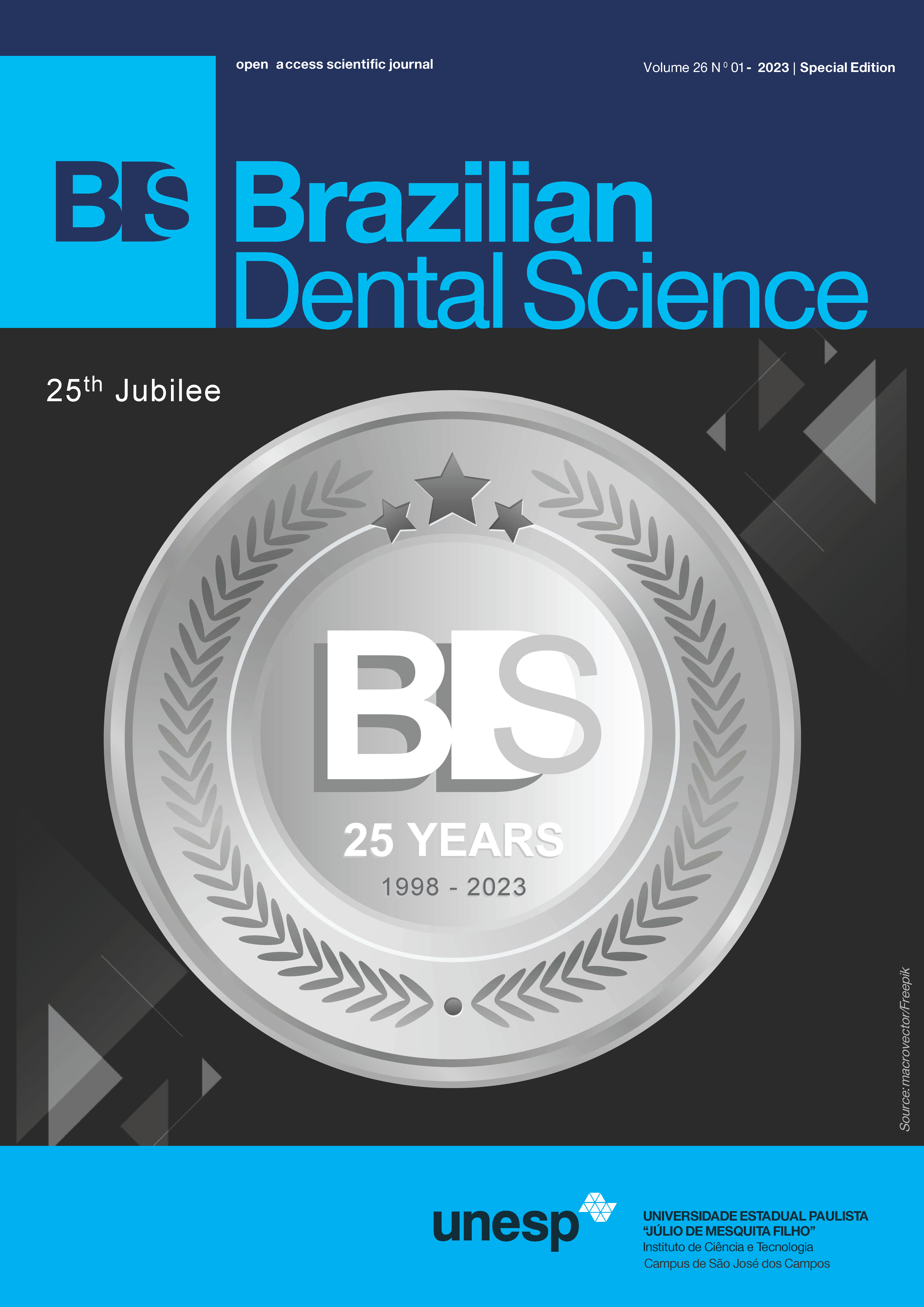Antimicrobial efficacy of S-PRG containing toothpastes on S. mutans biofilm development
DOI:
https://doi.org/10.4322/bds.2023.e3672Abstract
Objective: to investigate the antimicrobial effects of toothpastes containing bioactive surface pre-reacted glass particles (S-PRG) on S. mutans biofilms adherence, initial colonization and maturation. Material and Methods: a reference UA 159 and a clinical S. mutans (SM6) strain were used. Bovine enamel specimens were randomly allocated into the groups (n=5): toothpastes containing 0%; 1%; 5%; 20%; 30% S-PRG; positive control dentifrice (NaF+triclosan); and negative control (distilled water). For biofilm development, samples were placed in a 24-well plate containing artificial saliva (4h), followed by adding 1mL of artificial saliva, BHI broth and 225uL of S. mutans suspension. Treatments with toothpastes were applied previously or after 4h and 24h of biofilm formation. Samples were incubated for 48h at 37°C in 5%CO2 and biofilm was detached and seeded in Petri dishes for determining the number of viable cells. Data were analyzed by ANOVA and Tukey test (5%). Results: significantly lower microorganisms’ adherence (p<0.05) was obtained for all S-PRG toothpastes, with similar results to NaF+triclosan for SM6 and 20 and 30%S-PRG groups exhibiting higher inhibition effect than the NaF+Triclosan for UA159. Antibacterial effect on the early-stage biofilm was also observed for the S-PRG groups, but was not superior to the NaF+Triclosan toothpaste. For the mature biofilm, the effective antimicrobial potential of S-PRG toothpastes was observed only for the SM6 clinical strain, but was not higher than the positive control. Conclusion: experimental S-PRG toothpastes were effective to inhibit S. mutans biofilm growth by exhibiting antimicrobial activity, being promising agents to prevent cariogenic biofilm development.
KEYWORDS
Biofilm; Dental enamel; Giomer; Streptococcus mutans, S-PRG.
Downloads
Published
How to Cite
Issue
Section
License
Brazilian Dental Science uses the Creative Commons (CC-BY 4.0) license, thus preserving the integrity of articles in an open access environment. The journal allows the author to retain publishing rights without restrictions.
=================





























